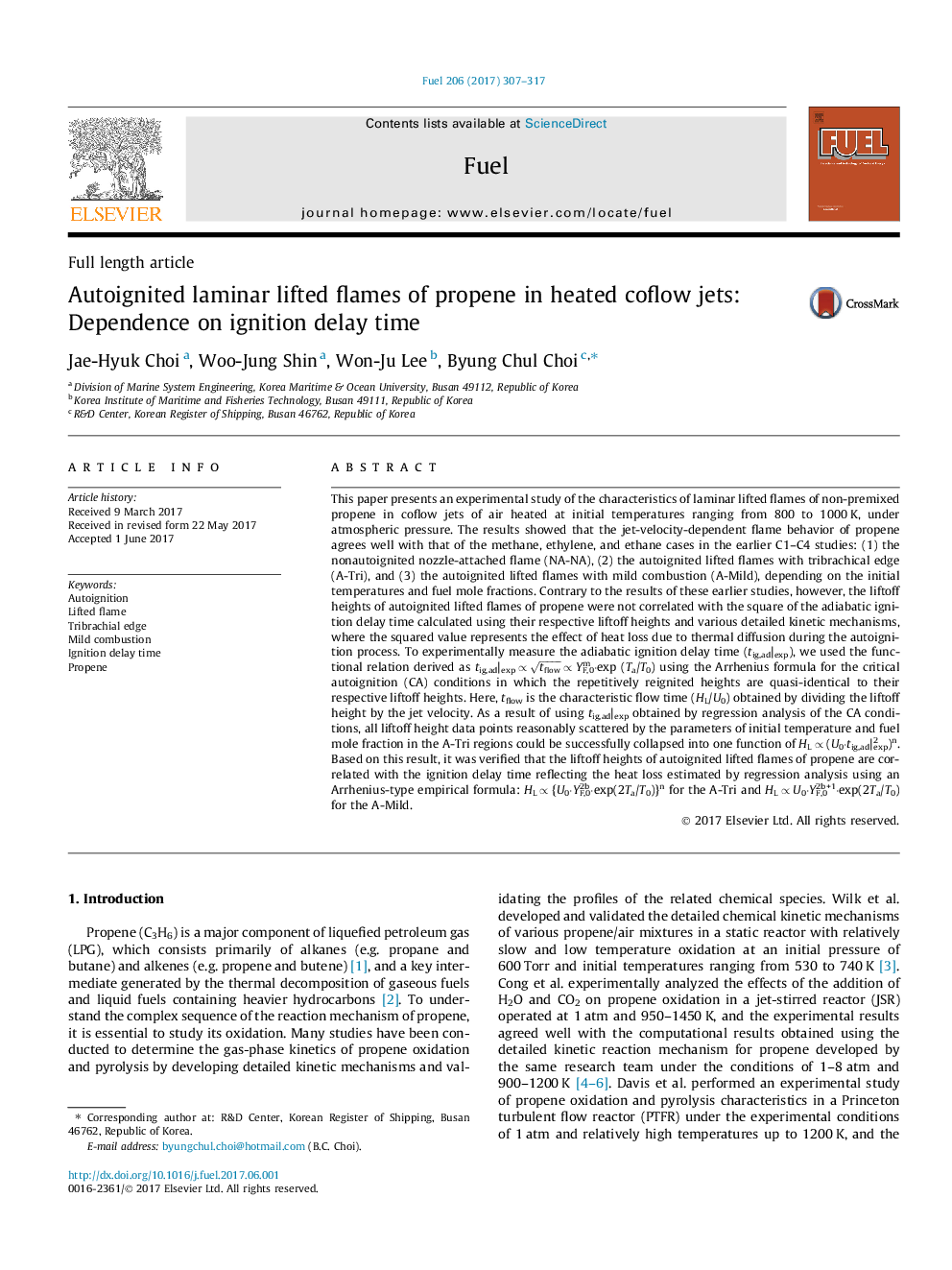| Article ID | Journal | Published Year | Pages | File Type |
|---|---|---|---|---|
| 4768575 | Fuel | 2017 | 11 Pages |
Abstract
This paper presents an experimental study of the characteristics of laminar lifted flames of non-premixed propene in coflow jets of air heated at initial temperatures ranging from 800 to 1000 K, under atmospheric pressure. The results showed that the jet-velocity-dependent flame behavior of propene agrees well with that of the methane, ethylene, and ethane cases in the earlier C1-C4 studies: (1) the nonautoignited nozzle-attached flame (NA-NA), (2) the autoignited lifted flames with tribrachical edge (A-Tri), and (3) the autoignited lifted flames with mild combustion (A-Mild), depending on the initial temperatures and fuel mole fractions. Contrary to the results of these earlier studies, however, the liftoff heights of autoignited lifted flames of propene were not correlated with the square of the adiabatic ignition delay time calculated using their respective liftoff heights and various detailed kinetic mechanisms, where the squared value represents the effect of heat loss due to thermal diffusion during the autoignition process. To experimentally measure the adiabatic ignition delay time (tig,ad|exp), we used the functional relation derived as tig,ad|exp â tflow â YF,0m·exp (Ta/T0) using the Arrhenius formula for the critical autoignition (CA) conditions in which the repetitively reignited heights are quasi-identical to their respective liftoff heights. Here, tflow is the characteristic flow time (HL/U0) obtained by dividing the liftoff height by the jet velocity. As a result of using tig,ad|exp obtained by regression analysis of the CA conditions, all liftoff height data points reasonably scattered by the parameters of initial temperature and fuel mole fraction in the A-Tri regions could be successfully collapsed into one function of HL â (U0·tig,ad|exp2)n. Based on this result, it was verified that the liftoff heights of autoignited lifted flames of propene are correlated with the ignition delay time reflecting the heat loss estimated by regression analysis using an Arrhenius-type empirical formula: HL â {U0·YF,02b·exp(2Ta/T0)}n for the A-Tri and HL â U0·YF,02b+1·exp(2Ta/T0) for the A-Mild.
Related Topics
Physical Sciences and Engineering
Chemical Engineering
Chemical Engineering (General)
Authors
Jae-Hyuk Choi, Woo-Jung Shin, Won-Ju Lee, Byung Chul Choi,
